As Paris 2024 kicks off, we look back at all the medal-winning fashion from Olympic history
On Friday (July 26), the Olympics touch down in Paris. With 2024’s edition being hosted by the fashion capital, it comes as no surprise that Fashion (capital F) is front and centre.
As a premium partner, LVMH’s presence is almost omniscient at this year’s games – Berluti is behind France’s opening ceremony outfits, Maison Chaumet designed the medals, Louis Vuitton created the checkerboard trays they’ll be presented on, and Moët & Chandon is the official provider of celebratory bubbly. Chic!
Eager to prove their own fashion chops, competing countries have enlisted design giants including Ralph Lauren and Giorgio Armani, as well as upcoming names like Labrum and JUST IN XX to craft their uniforms for this year’s event. Another opportunity for fashion to infiltrate your life, brands offering to rep for their countries isn’t a new concept. From Issey Miyake and Telfar to the recent Mongolian offering that everyone can’t stop talking about, below we round up 12 of the Olympic uniforms throughout history that go the hardest.
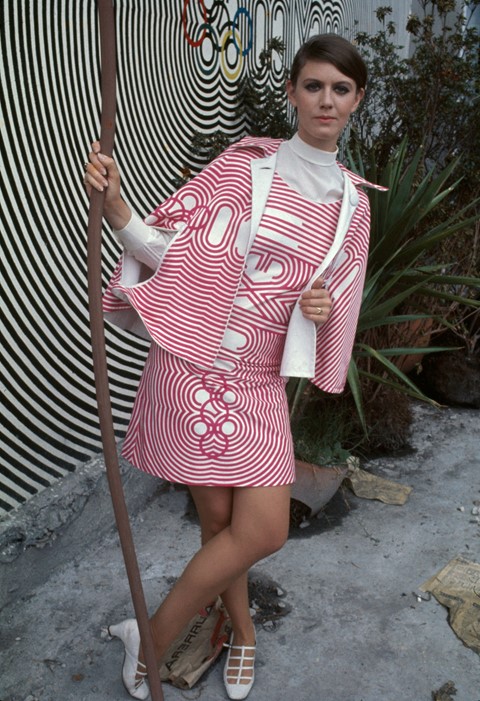
As host nation for the 1968 Olympics, Mexico tapped architect Pedro Ramírez Vázquez to dream up the visual identity for the games. Drawing inspiration from Indigenous Mexican art – with a touch of 60s hippy psychedelia – the graphic logo that merged the iconic rings with ‘Mexico 1968’ appeared on Courrèges-like shift dresses (with cute matching capes) created by Irma Dubost and Julie Murdoch. Elsewhere, colour-coded iconography that directed attendees to the various events – featuring stick figures diving, running, and boxing – was blown up on totally groovy tunics worn by Olympic staff.
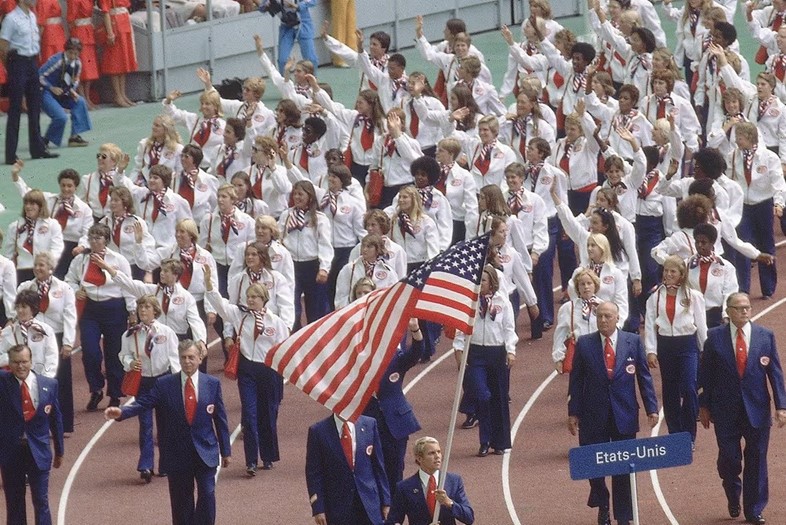
While Ralph Lauren has been the official designer of Team USA’s Olympic uniforms since 2008, back in 1976, it was the turn of fashion legend Halston – who created looks for both the Summer and Winter editions in Montréal and Innsbruck. Steering clear of stale sportswear, the designer chose to represent the Stars and Stripes via relaxed 70s suits with red ties for him and white zip-ups with red handbags and chic neckerchiefs for her. Perfect to head straight from the opening ceremony to the discotheque.
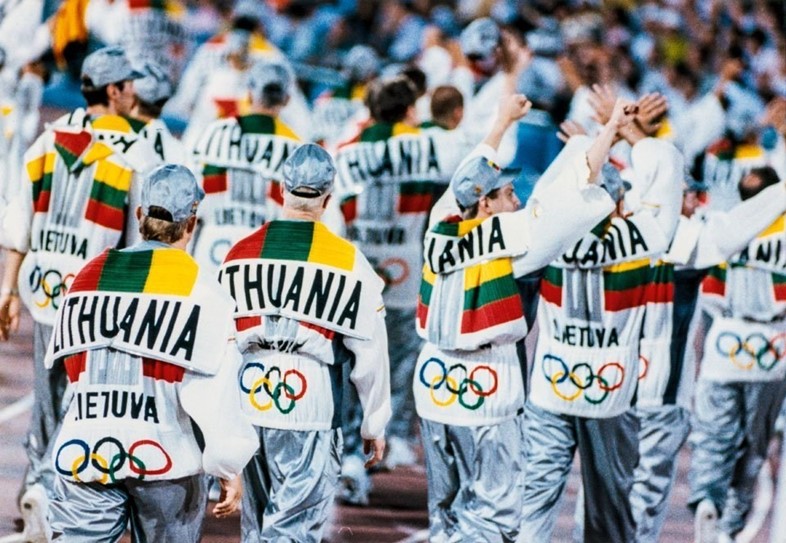
The 1992 Olympics – hosted in Barcelona – marked the first games Lithuania would compete as a nation, after celebrating its independence two years prior. Thanks to the team’s doctor, Dr Edward Domanskis – who was a fan of design legend Issey Miyake – the late Japanese genius ended up designing the team’s uniform, for free.
“When I think about what clothes should be in the future, I think that sportswear is the most innovative and diverse. It focuses on the fresh sensation of function, colour, material, etc,” Miyake said at the time. “I want to gaze at the 21st century through sportswear, now that people around the world can watch a variety of sports through television.” The perfect environment for his signature springy pleats, Lithuania’s lucky athletes wore custom white sets with a collar that unzipped to reveal the country’s flag and name. Also showing their support for the fledgling country, American rock legends The Grateful Dead sponsored the stoner-appropriate rainbow tie-dyed jerseys and shorts worn by their basketball team. Give them the gold!
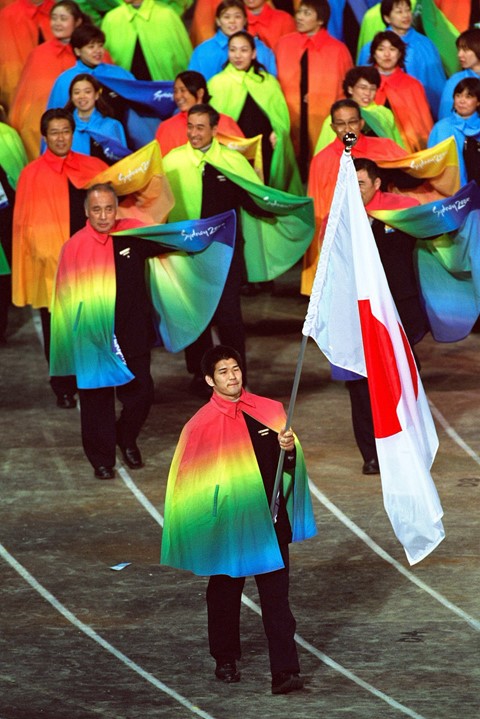
To make maximum impact at the 2000 Sydney Olympics, Japan kept its uniform under wraps until the very last minute – not even revealing to its athletes until before the opening ceremony. Kicking off the new millennium, the design team decided to go in a different direction with the uniforms, drawing inspiration from the “carefree nature and the city’s deep blue sky,” according to Kazuko Tagawa, director of Nippon Uniform Center and project supervisor. A sea of rainbow-coloured capes were the cherry on top of Japan’s simple black uniforms.
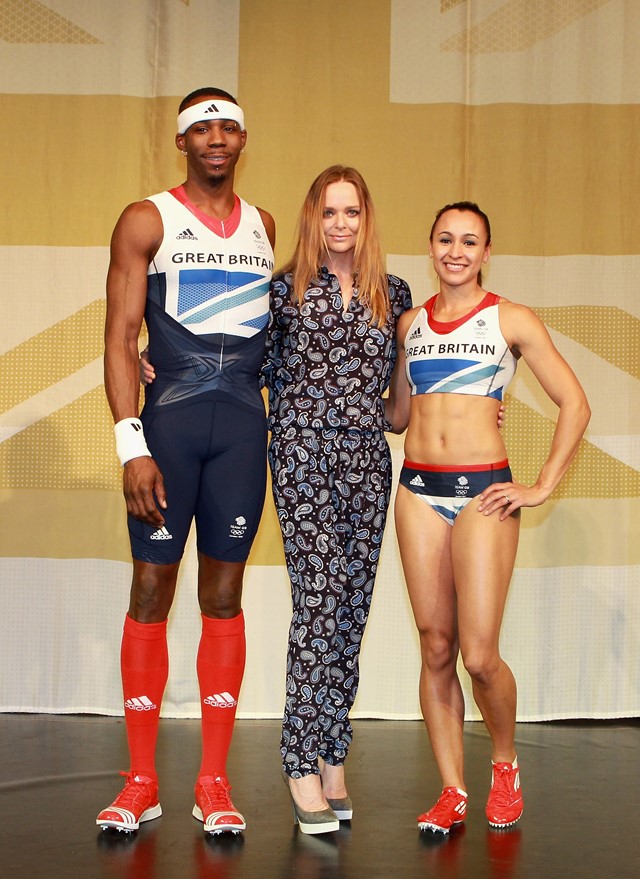
2012 saw the Olympics touchdown in London for the first time in 64 years. Perfect for the unseasonably hot summer, British designer Stella McCartney teamed up with adidas to create a collection of sexy skin-tight, cropped sportswear. Keeping it simple, McCartney took the union flag as inspiration. “Something that was very important to me was to try and use that very iconic image but to dismantle it and try to soften it, break it down and make it more fashionable in a sense,” she explained. While not necessarily reinventing the wheel – haters also criticised it for being ‘too blue’ – McCartney’s performance-based uniforms now feel synonymous with the games, a blend of fashion and function that saw Team GB place third overall.
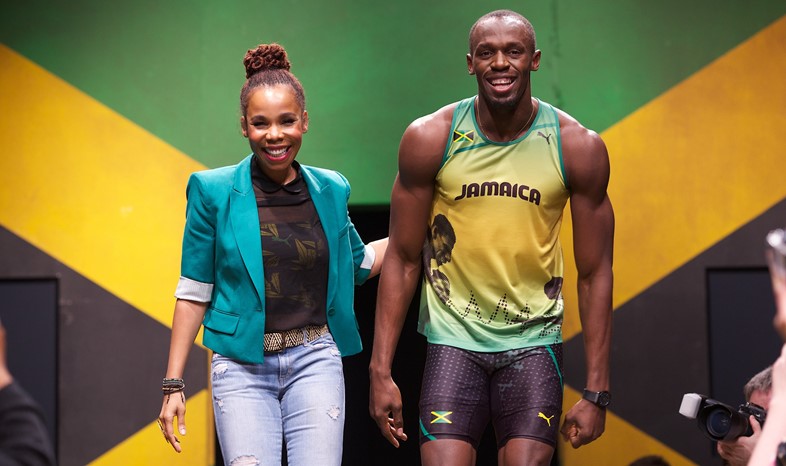
For Jamaica’s 2012 uniform, PUMA enlisted Bob Marley’s daughter Cedella Marley to collaborate on the designs. “I want to bring the old and the new Jamaica together,” she said at the time. “It should be Grace Jones meets Bob Marley on the track, and we’re going to have fire on the field.” Using the country’s flag as the starting point, Marley created a collection of sleek sportswear, footwear, and accessories in green, yellow, and black that was later sold for aspiring Olympians. Encouraging the wearers to mix and match, the procession of athletes at the opening ceremony was an individual expression of personality with flag-bearing Olympic legend Usain Bolt leading the charge in neon yellow trousers.
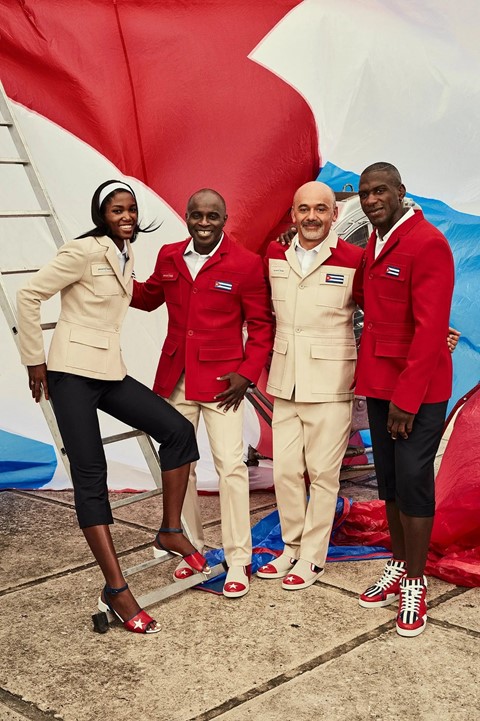
An unusual pairing, at the Rio games in 2016, Cuba tapped French footwear designer Christian Louboutin to create its uniforms. Teaming up with Henri Tai, former handball player and founder of Sporty Henri, the looks were created with input from the athletes. The result was structured military jackets inspired by guayabera in red or khaki, with the nation’s lucky five-point star on the back. “It’s that elegance and fluidity of movement of someone who is so in control of their body that fascinates me,” Louboutin said of his interest in taking on clothing. “At the Olympics, it feels like these athletes put on performance gear and simultaneously turn into these superheroes that defy gravity, that defy time, that defy all rules of physics.” The footwear was obviously given special attention, with choices ranging from kitten heel sandals to high top trainers. And yes, before you ask à la “Bodak Yellow”: these is red bottoms, these is bloody shoes.
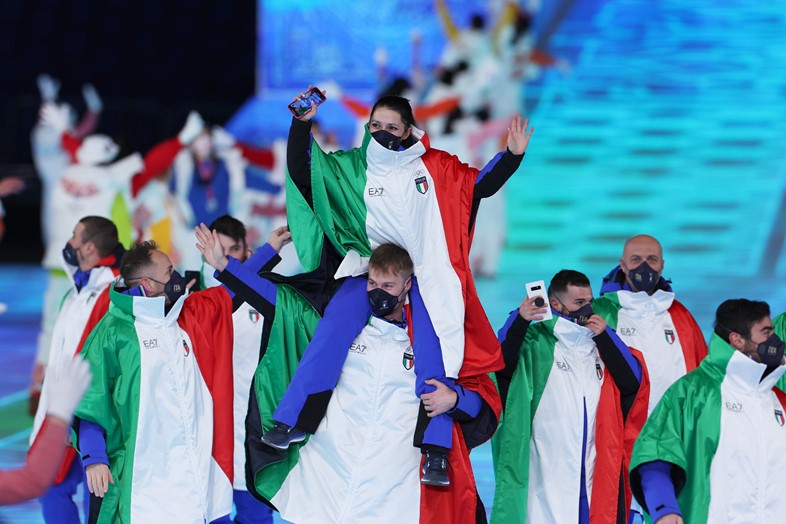
Fashion veteran Giorgio Armani has been the designer behind Italy’s uniforms from 2012 to today, with previous years a variety of luxury sportswear sets. But for the Beijing winter games in 2022, the nonagenarian wanted to turn the dial up to 11. Turning the tricolour flag into a campy Moschino-esque cape, the inside was printed with a golden inscription, the country’s national anthem close to the heart of each athlete. It doesn’t get more Italian than that. “Working with Italian athletes is always a pleasure for me and a source of great pride,” Armani shared on his ongoing contribution. “I designed this uniform as a tribute to our flag and the high values that it represents, and that our athletes embody.”

While better known for being the genius behind the ‘Bushwick Birkin’, in 2020, Telfar Clemens announced that he would be designing Liberia’s Olympic outfits for the games in Tokyo. Designed in collaboration with creative partner Babak Radboy, the unisex looks featured unitards and signature asymmetric tank tops in the country’s red, white, and blue with a single star that also nodded to its flag. The collection also featured a take on African lappa, with a wrap-around shawl that tied at the waist. “The Liberian National Team manifests a profound narrative of repatriation. Telfar, like the athletes who make up the team, is asked to represent something much deeper than a nation,” Clemens said on his involvement.
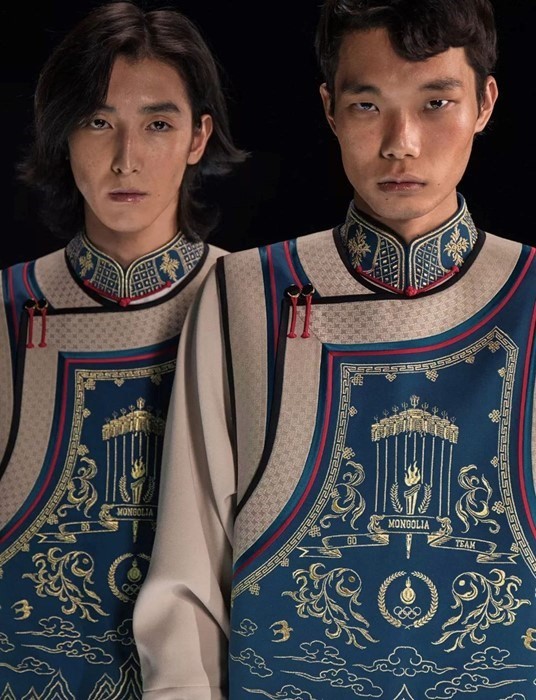
The 2024 Olympic Games are yet to start, but Mongolia already got the gold for its uniforms – created by sisters Michel and Amazonka Choigaalaa, behind the brand Michel & Amazonka. “Paris is the capital of fashion, so we wanted our uniforms to stand out by their design, craftsmanship, detailed meaning, heritage and elegance,” the designers told Dazed on their approach, after the looks went viral. Ornate, delicately embroidered with golden thread, the Deel-inspired garments would look just as at home in Middle Earth.
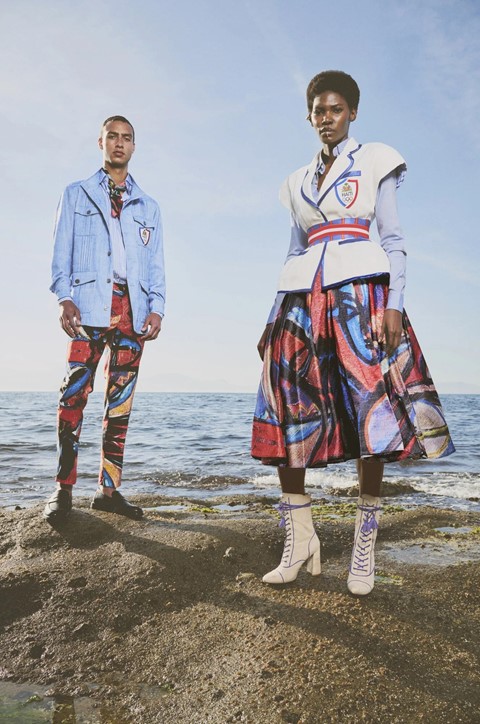
For this year’s edition in Paris, Haiti’s 12 competitors will be clad in uniforms courtesy of Italian-Haitian designer Stella Jean. Created in collaboration with Haitian painter Philippe Dodard – whose artwork “Passage” appears on the uniform’s skirt and trousers – the uniform gave the chance for Jean to highlight an important political message. “These 12 will stand and compete for a nation that asks the world not to forget that it has changed history,” she shared on Instagram. “Responding to their call is not only an ethical duty, as the present and future of multilateralism is at stake.”
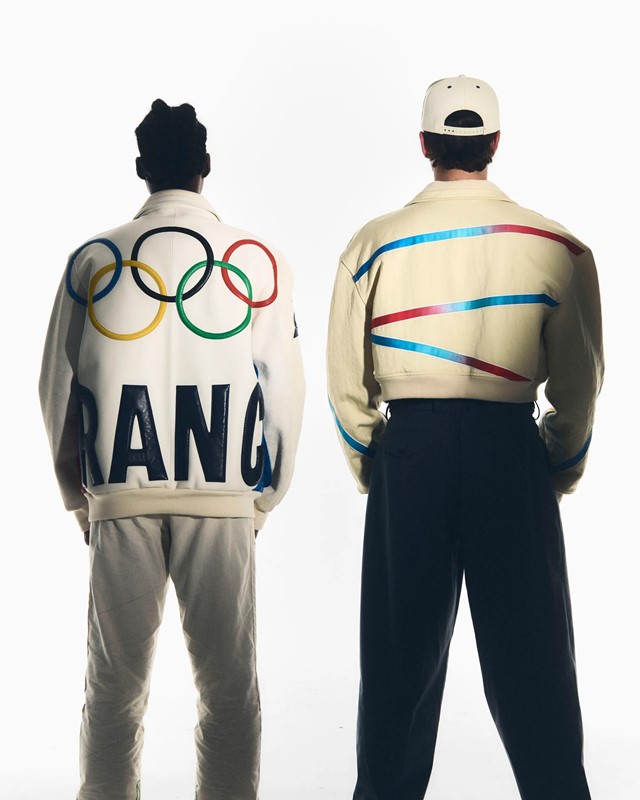
While Berluti was tapped to provide the host country’s opening ceremony looks (sleeveless blazers with ombre lapels, created in collaboration with Carine Roitfeld) it’s Pigalle’s Stéphane Ashpool who is behind the team’s uniform this year. Designed in partnership with Le Coq Sportif, Ashpool undertook the task of locally producing looks in Chanel-owned ateliers that were bespoke for the assortment of athletes – competing in everything from gymnastics and fencing to skateboarding and swimming. Going in a different direction to the 29 countries globally that have red, white, and blue flags, the uniforms instead feature gradients with additional fun details from shiny yarns to feathers for extra decoration. “The technique is always joining forces with the aesthetic. This time, more than usual,” Ashpool explains. “Technicity can be as simple as how we manage to have a stretch fabric with feathers. It’s not just the meaning of having a dry fit.”

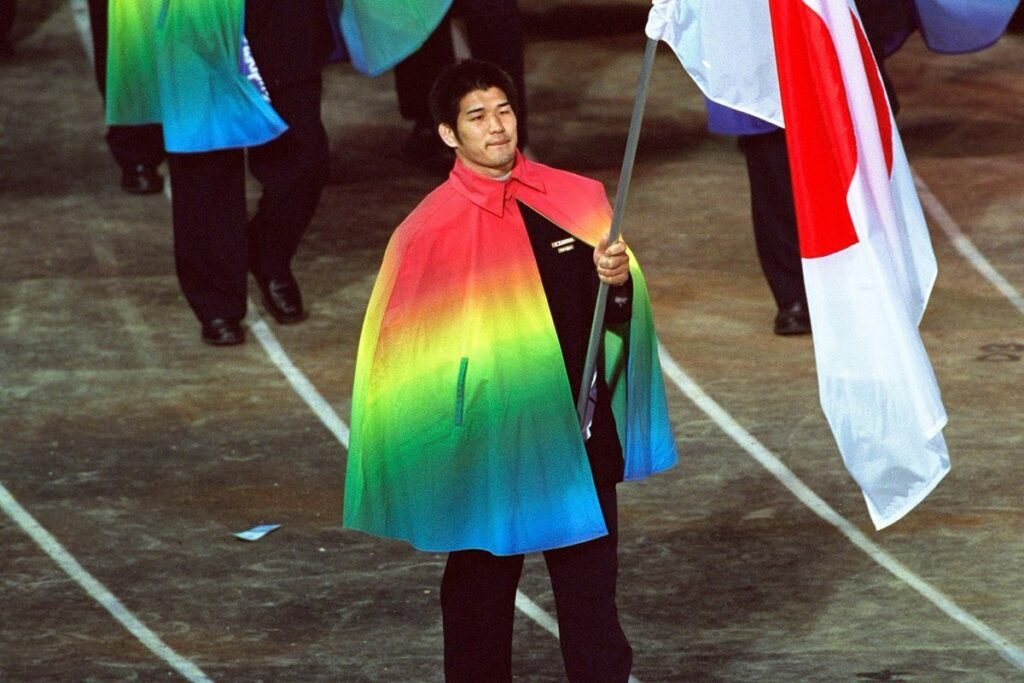
На этом сайте представлена полезная информация о лечении депрессии, в том числе у возрастных пациентов.
Здесь можно найти способы диагностики и советы по восстановлению.
http://artatthemanor.com/__media__/js/netsoltrademark.php?d=empathycenter.ru%2Farticles%2Famitriptilin-pri-bolyah%2F
Отдельный раздел уделяется психологическим особенностям и их влиянию на психическим здоровьем.
Также рассматриваются современные терапевтические и психологические методы лечения.
Материалы помогут лучше понять, как справляться с угнетенным состоянием в пожилом возрасте.
На этом сайте собрана важная информация о терапии депрессии, в том числе у пожилых людей.
Здесь можно найти методы диагностики и подходы по улучшению состояния.
https://minidracoforsale60470.dbblog.net/6296753/5-simple-statements-about-marketing-explained
Особое внимание уделяется возрастным изменениям и их влиянию на эмоциональным состоянием.
Также рассматриваются эффективные медикаментозные и психологические методы поддержки.
Статьи помогут разобраться, как справляться с угнетенным состоянием в пожилом возрасте.
I join told all above. Let’s discuss this question. Here or in PM.
На данном сайте АвиаЛавка (AviaLavka) вы можете забронировать дешевые авиабилеты по всему миру.
Мы подбираем лучшие цены от надежных авиакомпаний.
Удобный интерфейс поможет быстро подобрать подходящий рейс.
https://www.avialavka.ru
Гибкая система поиска помогает выбрать самые дешевые варианты перелетов.
Покупайте билеты в пару кликов без скрытых комиссий.
АвиаЛавка — ваш удобный помощник в путешествиях!
https://basenotes.com/community/members/1xbetinlogincom.26409812/#about